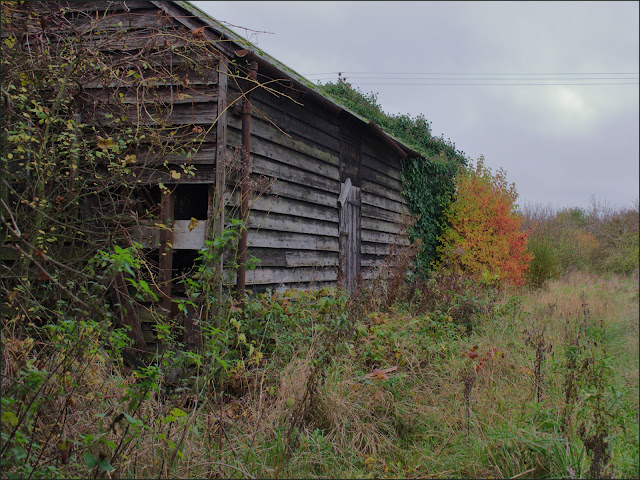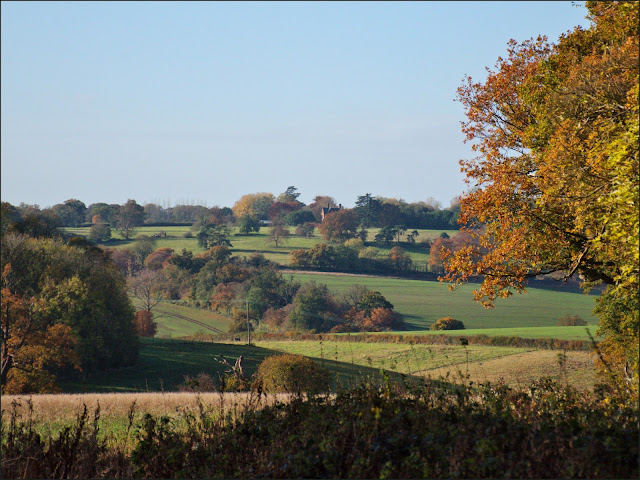A couple of weeks ago I had a walk around the village to photograph the autumn scene. Some of the best colour is to be found around people's homes; in fact there are probably as many trees in gardens as there are in the fields and hedgerows in this arable country of South Cambridgeshire. I'm also aware that my photos tend to make things look idyllic, so I thought I would include some of the human clutter for a change. Then I decided I wouldn't publish these photos. Now I'm backtracking and think that maybe I will....
Near to home. All the leaves have gone now.
 A mix of housing.
A mix of housing.
Repair Cafe - I didn't know about that.
On the corner of Chiswick End.
Just across the road from the last photo.
There's a window in there!
ACE OF WASTE - I like that.
I liked the way those faded blue garage doors contrasted with the leaves.
Near the horse paddocks.
Old barn through a gap in the hedge.
Fenny Lane - (is in my ears and in my eyes)!
Where I used to wait for the bus.
School sign.
Gate.
Looking down the High Street.
The way I used to bike home after work.
In Malton Lane.
Sun just peeping through.
Yellow.
So that's how it looked a couple of weeks ago. Today most of the leaves have fallen and it's grey with drizzle.
Take care.






















































